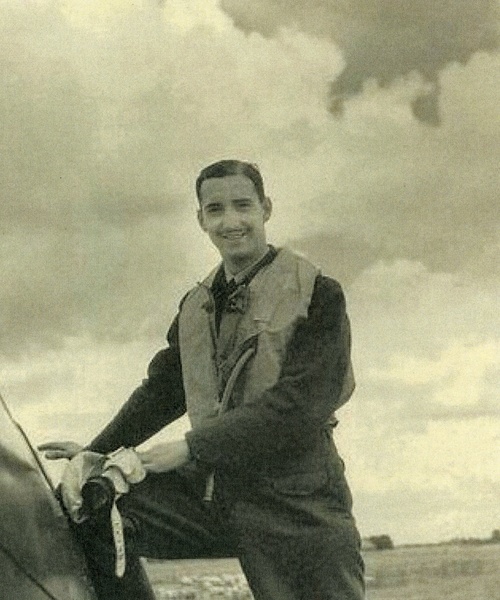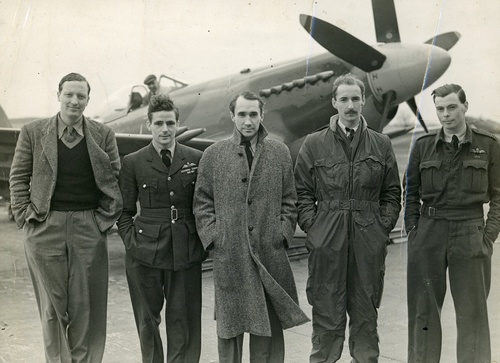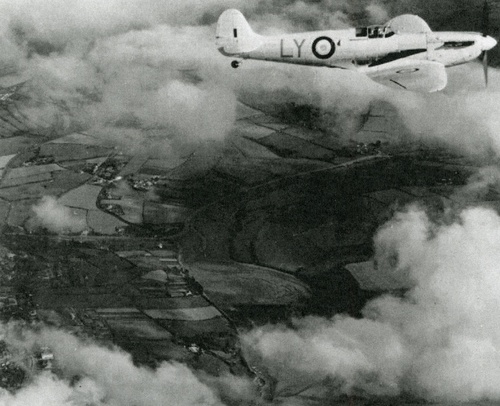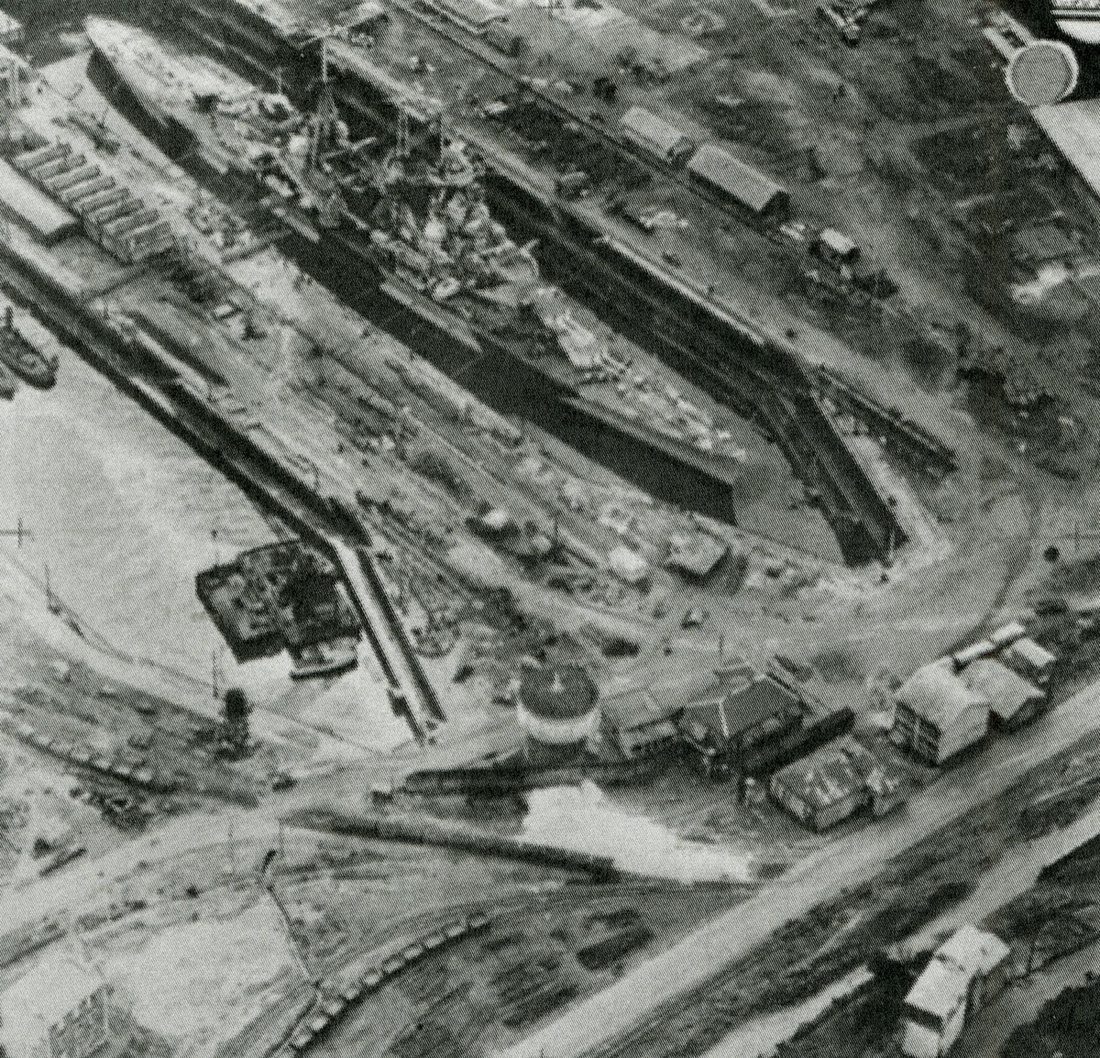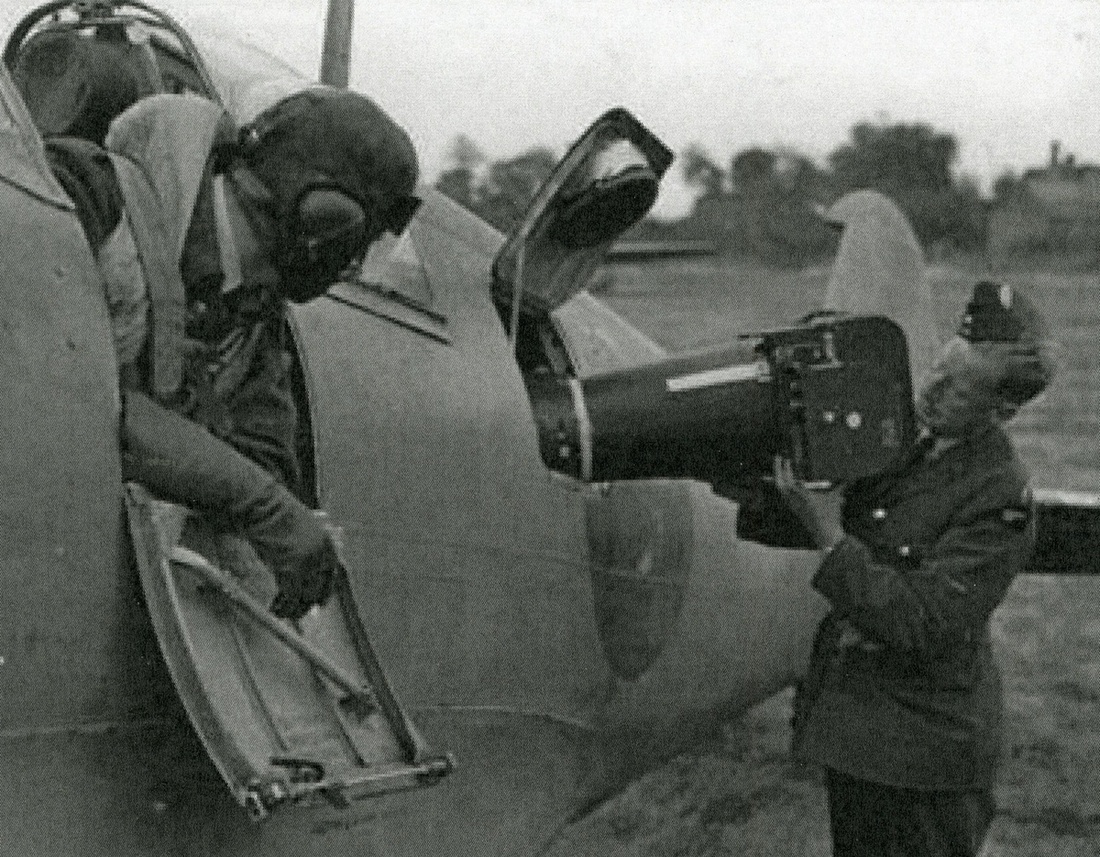Auction: 19003 - Orders, Decorations and Medals
Lot: 404
A rare Coastal Command 'Photo-Reconnaissance' Pilot's D.F.C. awarded to Squadron Leader W. J. G. Morgan, No. 540 Squadron, late No. 1 Photo Reconnaissance Unit, Auxiliary Air Force, later Test Pilot for Vickers-Armstrong, who flew a remarkable 116 operational sorties in unarmed P.R.U. Spitfire aircraft across a huge swathe of enemy-occupied Europe, including France, Holland, Germany, Italy and Norway
Distinguished Flying Cross, G.VI.R., officially dated '1943', unnamed as issued, in Royal Mint case of issue, extremely fine
D.F.C. London Gazette 1 October 1943. The official recommendation states:
'Flight-Lieutenant Morgan has a long and distinguished record of Operational flying. He has completed a very large number of photographic reconnaissance sorties and obtained some excellent photographs.'
The particulars of Meritorious Service for which the recommendation of the D.F.C. is made, add:
'This officer first joined P.R.U. in May 1941. After he had completed his operational tour and a period as instructor in the O.T.U. he returned to operations in November 1942. He has completed a total of 107 Photographic Reconnaissance sorties and nearly 300 hours operational flying. He has shown a consistently high standard in all his work, and good reliability and judgement.'
William John Guy Morgan was born on 13 February 1913 at Fishguard, Wales, and educated at Deans Close School, Cheltenham. He enlisted into the Auxiliary Air Force in January 1939 and was posted to No. 614 (County of Glamorgan) Squadron at Cardiff where he gained his first experience of flight on 4 February 1939 aboard an Avro Tutor piloted by Flying Officer MacDonald. Commissioned Acting Pilot Officer on 3 June 1939, Morgan remained with No. 614 Squadron and spent the next few months gaining experience piloting Hector, Magister and Lysander aircraft from Old Sarum and Grangemouth.
On 6 June 1940, Morgan piloted Lysander N1249 on a 40 minute reconnaissance flight from R.A.F. Odiham. Sent to Aberdeen, he conducted dusk patrols on 25 and 26 June, followed by a large number of dawn sweeps over the North Sea and Firth of Forth. Transferred to No. 241 Squadron at Inverness, Morgan gained his first experience of a front and rear camera gun on 2 September 1940, before spending the next six months flying regular patrols along the east coast of Scotland and learning formation flying, low level reconnaissance and supply dropping. On 14 May 1941 Flying Officer Morgan took the opportunity to transfer to No. 1 Photo Reconnaissance Unit based at R.A.F. Benson, Oxfordshire. He spent the rest of the month gaining experience of Battle and Spitfire aircraft, before being posted to 'C' Flight at St Eval, Cornwall, on 10 June 1941.
Three days later Morgan conducted his first operational sortie involving a successful photo-reconnaissance flight over Brest at 28,000 feet in Spitfire X4944. He photographed the U-Boat pens and town for a second time on 18 June 1941 at 29,000 feet, but further attempts were thwarted by a lack of cover on 20 June and '10/10 cloud at 16,000 feet' on 21 June. In July 1941 Morgan conducted 17 high level photographic reconnaissance flights in Spitfire aircraft of No. 1 P.R.U., the main objective being Brest, but also including Morlaix, Lannion, Ile Grande, St. Malo and Rennes. Transferred from St. Eval to Benson, he continued apace, photographing Wilhelmshaven on 12 August and Emden at 26,000 feet on 17 August 1941. On 26 August he flew a photo-reconnaissance mission over Antwerp and Ostend at 27,000 feet, followed by further sorties over Etaples, Cap Gris-Nez, Hamburg and Amsterdam.
September witnessed a large number of flights over Calais, Etaples, Amiens and Boulogne, the latter at 2,500 feet. On 16 September Morgan attempted an unsuccessful sortie to Copenhagen, but was more successful on 21 September 1941 during a flight over Nauen on the outskirts of Berlin. This was followed by a photo-reconnaissance of Kiel on 3 October 1941, his log book noting, 'chased by 4 109's'. Despite having flown 53 operational sorties in a relatively short space of time with No. 1 P.R.U., Morgan continued to fly high-level photographic-reconnaissance missions in November and December. The New Year witnessed a flight over Dresden on 14 January 1942 and a 3 hour return sortie over the German fleet at Wilhelmshaven the following afternoon. February saw a flight to Stavanger and return to Kiel on 15 February 1942, whilst March saw an increasing interest in Norway, notably a photo-reconnaissance flight at 13,500 feet on 10 March 1942 over the heavy cruisers Prinz Eugen and Admiral Scheer lying at Lo Fjord, Trondheim. Having conducted 67 operational flights totalling 159.20 hours with No. 1 P.R.U., Morgan was finally rested at the end of April 1942, being appointed instructor to 'K' Flight at Detling.
The summer of 1942 saw Morgan appointed Commanding Officer of No. 1. P.R.U. Operational Training Flight. When 'K' Flight, No. 1. P.R.U. became 'B' Flight 8(C) O.T.U., he remained in charge, flying almost daily test flights and aerobatics from Worthy Down, Thornaby and Turnhouse airfields. In January 1943, Morgan was posted back to Benson and appointed Commanding Officer of 'B' Flight, No. 544 (P.R.) Squadron.
Flying from Portreath to Gibraltar on 3 January 1943, he was soon conducting photo-reconnaissance missions in Spitfire aircraft over Malaga, Cadiz, Maison Blanche, Huelva, Seville, and Lisbon. On 28 January 1943 he flew Spitfire BS491 along the eastern coastline of Majorca, his log noting, '6 Destroyers in Polensa Bay'. Flying from Gibraltar, he conducted almost daily flights over Spain and North Africa, notably Tangiers, before returning to St. Eval on 14 March 1943.
Transferred to No. 540 Squadron at Benson on 3 May 1943, Morgan began to gain experience flying Mosquitoes and was soon back in the groove taking photographs of Cherbourg from 12,000 feet on 18 May and Pilsen three days later. These were followed by photo-reconnaissance flights to Turin on 14 August 1943, Leipzig on 23 September 1943 and Stuttgart on 9 October 1943. Assessed as 'exceptional' as a Pilot-Navigator and photographer, Morgan was awarded the D.F.C.
Test Pilot
Having flown 116 operational sorties between June 1941 and November 1943, totalling 309.10 hours, Morgan was posted as Test Pilot to Vickers-Armstrong's Supermarine Works on 24 November 1943. The next month he flew seven 'Production Test' flights in Spitfire Mk. VIII aircraft, followed by a remarkable ten test flights in a single day on 14 January 1944. Specialising in - but not limited to - Spitfire Aircraft, Morgan's log books bear testimony to a remarkable range of aircraft flown, including the last production build Spitfire Mk. 24 VN496. He later became a leading figure in Supermarine's Attacker and Scimitar test programmes, operating from Hurn, Chilbolton and Wisley. In later life Morgan lived at 9 Rutland Road, Twickenham, where he died on 4 November 1974.
Sold with copied recommendations and research, together with a complete run of Second World War R.A.F. Pilot's (Form 414.) Log Books (3), commencing 4 February 1939 and concluding on 29 July 1945 with a flight in a Spitfire Mk. 14. Total flying hours: 1780.30.
Subject to 20% VAT on Buyer’s Premium. For more information please view Terms and Conditions for Buyers.
Sold for
£2,200
Starting price
£950

